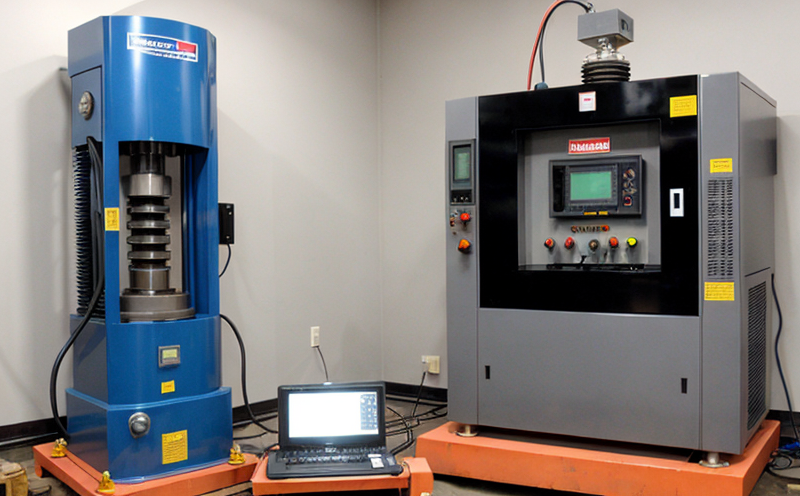Random Vibration Simulation Test for Logistics Packaging
The Random Vibration Simulation Test is a critical process in ensuring that logistics packaging can withstand the harsh environments and conditions encountered during transportation. This test evaluates how well the packaging will perform under random vibrations, which are common occurrences in various modes of transport such as trucks, ships, and airplanes. By simulating these real-world conditions, manufacturers and quality managers can identify potential weaknesses in their packaging design before it reaches the market.
The test involves placing a specimen (typically the product or its mockup) inside the testing apparatus along with the packaging. The apparatus then generates random vibrations that mimic those experienced during transport. This helps to determine if the packaging will protect the contents effectively, ensuring integrity and preventing damage. Compliance officers play an essential role in validating these tests against relevant international standards such as ISO 16739:2015 for road and rail transport.
During this process, the specimen is subjected to a range of frequencies and amplitudes that reflect typical transportation conditions. The testing machine uses sophisticated algorithms to create a series of random vibrations that closely replicate those encountered in transit. This approach ensures that the packaging is tested under realistic conditions rather than static loads which may not accurately represent real-world scenarios.
One of the key aspects of this test involves preparing the specimen for testing. The sample must be representative of what would actually ship, including any necessary inserts or fillers to ensure proper simulation. Once prepared, it is placed into the shaker cabinet where sensors monitor its performance throughout the duration of the test. These sensors provide real-time data on how well the packaging performs under various conditions.
After completing each test cycle, engineers analyze this data carefully to assess whether there has been any damage to either the product or the container itself. If issues are found, modifications can be made to improve future designs based on these findings. Compliance officers ensure that all tests adhere strictly to applicable regulations like those outlined in ISO 16739:2015 for road and rail transport.
For quality managers looking into improving their supply chain efficiency, understanding how different materials interact under vibration is crucial. By incorporating advanced technologies such as accelerometers into the testing process, more precise measurements can be taken about both frequency content and acceleration levels during each cycle of the test. This allows for better optimization of material choices and structural designs.
- Accurate representation of real-world conditions through precise simulation techniques
- Use of sophisticated sensors to measure key variables like frequency and amplitude accurately
- Precision analysis provided by experienced technicians who interpret results from multiple cycles consistently
Why Choose This Test
Selecting the Random Vibration Simulation Test for logistics packaging is beneficial because it provides a comprehensive evaluation of how well your package will protect contents during shipment. This type of testing ensures that any potential weaknesses in design or materials are identified early on, allowing for necessary adjustments before products reach customers.
By conducting this test prior to mass production, companies can save time and money by avoiding costly recalls later down the line due to faulty packaging causing damage to goods. It also helps maintain brand reputation since satisfied customers are more likely to recommend your company's services or products positively online or offline.
The Random Vibration Simulation Test is particularly useful for manufacturers who need assurance that their packages meet strict safety standards set by governing bodies around the globe. For example, ISO 16739:2015 provides specific guidelines on how to conduct these tests effectively, ensuring consistency across different jurisdictions.
Moreover, choosing this service offers peace of mind knowing that your logistics solutions are thoroughly checked against industry best practices. This can be especially important when dealing with hazardous materials or fragile items requiring extra care during transit.
International Acceptance and Recognition
The Random Vibration Simulation Test is widely accepted across numerous industries worldwide, particularly within the electronics sector. Compliance officers rely heavily on this form of testing to ensure that products comply with international standards such as those set out by ISO 16739:2015 for road and rail transport.
Many countries recognize these tests as an effective means of validating packaging integrity, making them a crucial component in global supply chains. Organizations like the International Electrotechnical Commission (IEC) have endorsed similar methods, emphasizing their importance in maintaining high levels of safety and reliability throughout all stages of production.
By adhering to these internationally recognized standards, companies demonstrate commitment to quality control and customer satisfaction while simultaneously enhancing their competitive edge. This recognition fosters trust among partners and clients, contributing significantly to long-term business success.





